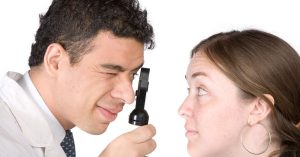
The topic of celebrities suffering with Lyme disease has made headlines for years. And with good reason. When Justin Bieber announced his Lyme diagnosis in January 2020, social media erupted — not with sympathy, but skepticism. Trolls accused him of making excuses for his appearance and behavior. His response? Medical records, lab results, and a documentary showing the brutal reality of chronic infection.
He was far from alone. At least 25+ high-profile celebrities have publicly disclosed Lyme disease diagnoses: Justin Bieber, Avril Lavigne, Shania Twain, Yolanda Hadid, Bella Hadid, Alec Baldwin, Kelly Osbourne, Ben Stiller, Amy Tan, George W. Bush, Ally Hilfiger, Debbie Gibson, Daryl Hall, Parker Posey, and even professional athletes like golfer Jimmy Walker and model Gisele Bündchen.
To the casual observer, it might seem like Lyme disease affects the famous more than anyone else. In truth, celebrity Lyme disease stories simply make a hidden epidemic visible. Celebrities don’t get Lyme more often—they just get heard.
The Numbers Tell the Real Story
While dozens of celebrity Lyme disease cases are known, they represent only a fraction of the real burden. The CDC estimates over 476,000 Americans are diagnosed and treated for Lyme disease every year. But experts believe the actual number is much higher, due to underreporting.
Fame Doesn’t Protect You From Ticks or Misdiagnosis
Many in the public eye live or work in high-risk areas: wooded estates in the Northeast, mountain retreats, or rural film sets. Exposure isn’t about fame. It’s about geography and climate. That’s why celebrities with Lyme disease serve as a reminder that tick-borne infections cross every social and financial boundary.
Lyme awareness: Celebrity Timeline
Public disclosure of celebrities diagnosed with Lyme disease has accelerated over the past two decades, creating waves of visibility and public awareness:
Early 2000’s:
-
2002 – President George W. Bush diagnosed (disclosed years later)
-
2005 – Actor Parker Posey speaks out
2010–2015: The Visibility Surge
-
2013 – Musician Daryl Hall (Hall & Oates) shares decades-long battle
-
2014 – Singer Avril Lavigne’s diagnosis
-
2015 – Yolanda and Bella Hadid go public; comedian Amy Schumer reveals diagnosis
2016–2020: The Advocacy Era
-
2017 – Shania Twain connects Lyme to vocal-cord damage
-
2018 – Alec Baldwin describes a 20-year journey with symptoms
-
2019 – Ben Stiller reveals 2011 diagnosis
-
2020 – Justin Bieber’s disclosure triggers a 400% spike in “Lyme symptoms” Google searches
2020–Present: Mainstream Acceptance
-
Celebrities document IV therapy and recovery on social media
-
Medical attention to persistent symptoms increases
-
Research funding expands under public pressure
Myths vs. Reality: Understanding Celebrity Lyme Disease
Myth #1: “Rich people can afford to have Lyme diagnosed.”
Reality: Celebrities face the same flawed testing and disbelief as others. Blood tests can miss early infection. They can afford more doctors but not more accurate diagnostics.
Myth #2: “They’re seeking attention or making excuses.”
Reality: Most stayed silent for years out of fear and stigma. Avril Lavigne waited until 2015 to disclose her 2014 diagnosis. Ben Stiller stayed quiet for eight years.
When they finally spoke, they faced ridicule and gaslighting.
Myth #3: “Celebrity Lyme is different from regular Lyme.”
Reality: The disease process is identical. Wealth may buy time off or integrative care, but it doesn’t change biology. Many still report years of failed treatment and ongoing symptoms.
Myth #4: “They self-diagnose because it’s trendy.”
Reality: Most underwent extensive medical testing by infectious disease or Lyme-literate physicians. Justin Bieber even shared lab documentation. Yolanda Hadid broadcast her family’s medical care on national television.
Fame Can’t Buy Recovery
Celebrity Lyme disease dismantles the myth that health outcomes depend solely on money or motivation because despite unlimited resources, many waited 3- to 5-years for an accurate diagnosis — the same average delay faced by ordinary patients. Even the most connected stars encountered blood tests that missed early infections and doctors who dismissed fatigue or pain as anxiety.
Their honesty helps others articulate what they feel but can’t prove — persistence after antibiotics is real. And, if Lyme disease can derail a touring schedule or acting career, imagine its effect on everyday individuals, struggling to work or attend school.


